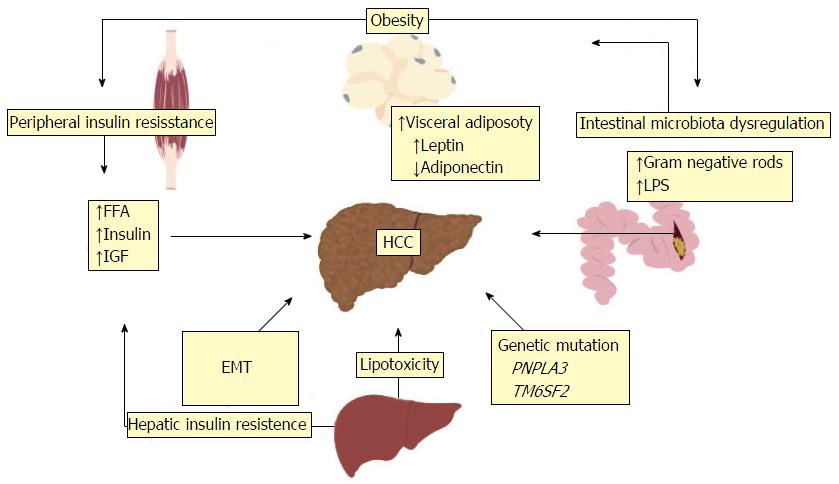Copyright
©The Author(s) 2017.
World J Hepatol. Apr 18, 2017; 9(11): 533-543
Published online Apr 18, 2017. doi: 10.4254/wjh.v9.i11.533
Published online Apr 18, 2017. doi: 10.4254/wjh.v9.i11.533
Figure 1 Risk factors and proposed mechanisms for non-alcoholic fatty liver disease and non-alcoholic steatohepatitis-related hepatocellular carcinoma.
The development of NAFLD and NASH-related HCC is multifactorial. Proposed pathogenic mechanisms include obesity, peripheral and hepatic insulin resistance from type 2 diabetes, increased hepatic lipid storage and lipotoxicity, EMT, genetic mutations and intestinal mibrobiota dysregulation. HCC: Hepatocellular carcinoma; EMT: Epithelial to mesenchymal transition; NAFLD: Non-alcoholic fatty liver disease; NASH: Non-alcoholic steatohepatitis; FFA: Free fatty acid; IGF: Insulin-like growth factor; LPS: Lipopolysaccharide; PNPLA3: Patatin-like phospholipase domain-containing 3; TM6SF2: Transmembrane 6 superfamily member 2.
- Citation: Cholankeril G, Patel R, Khurana S, Satapathy SK. Hepatocellular carcinoma in non-alcoholic steatohepatitis: Current knowledge and implications for management. World J Hepatol 2017; 9(11): 533-543
- URL: https://www.wjgnet.com/1948-5182/full/v9/i11/533.htm
- DOI: https://dx.doi.org/10.4254/wjh.v9.i11.533













